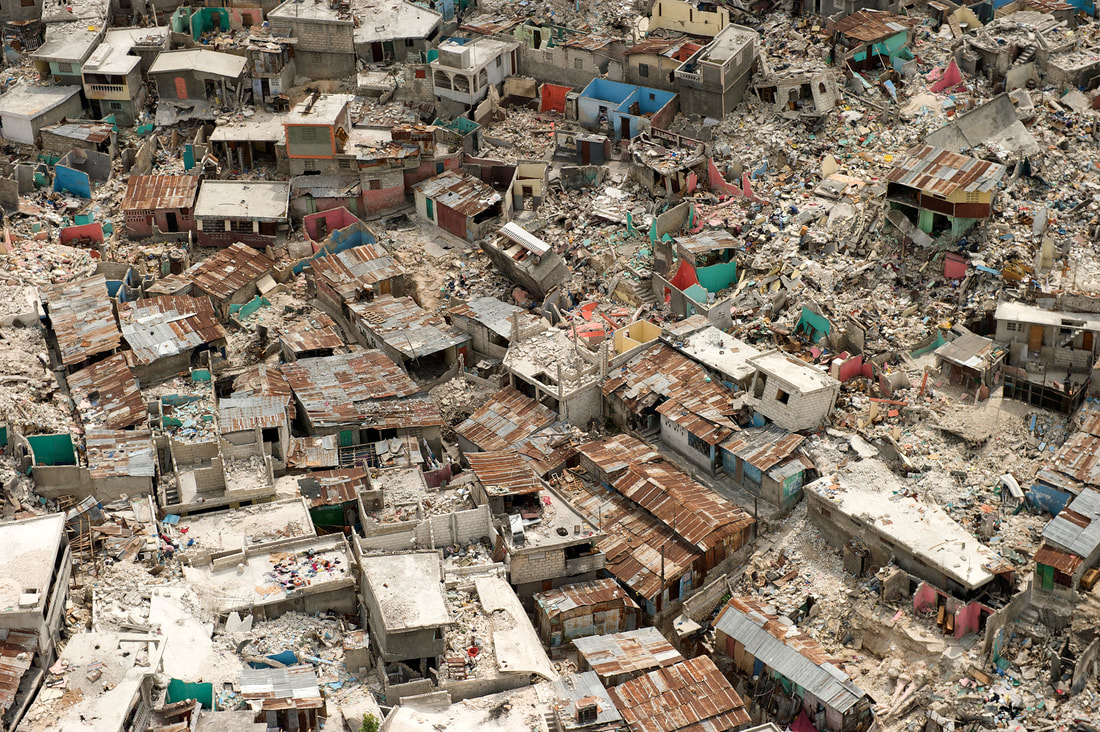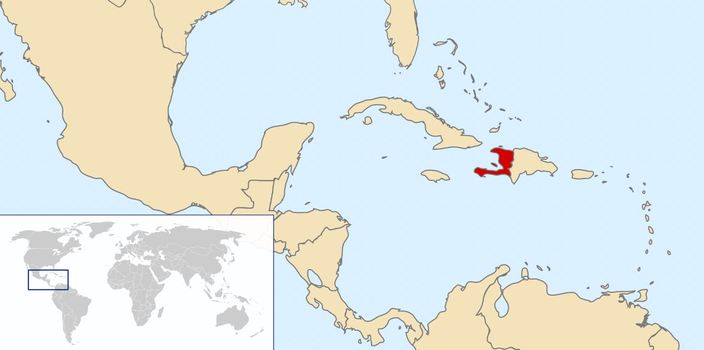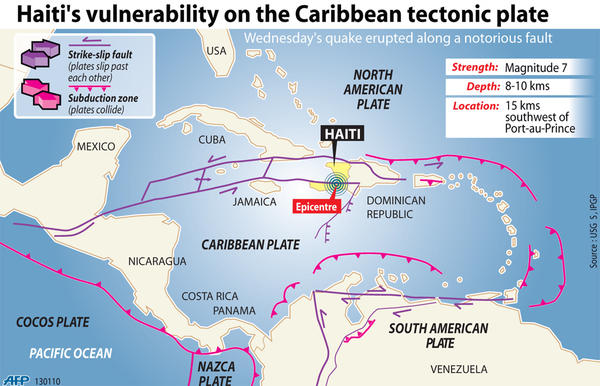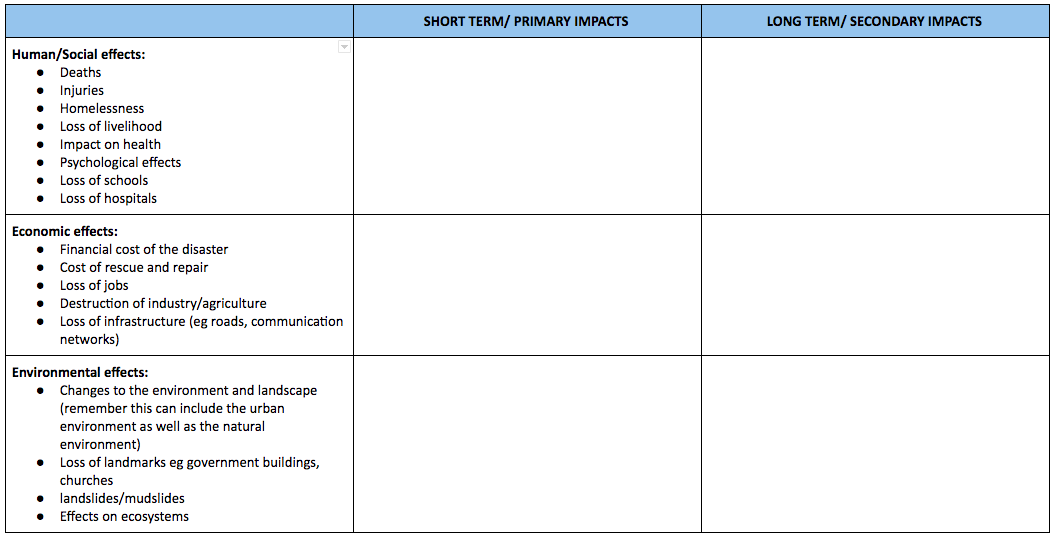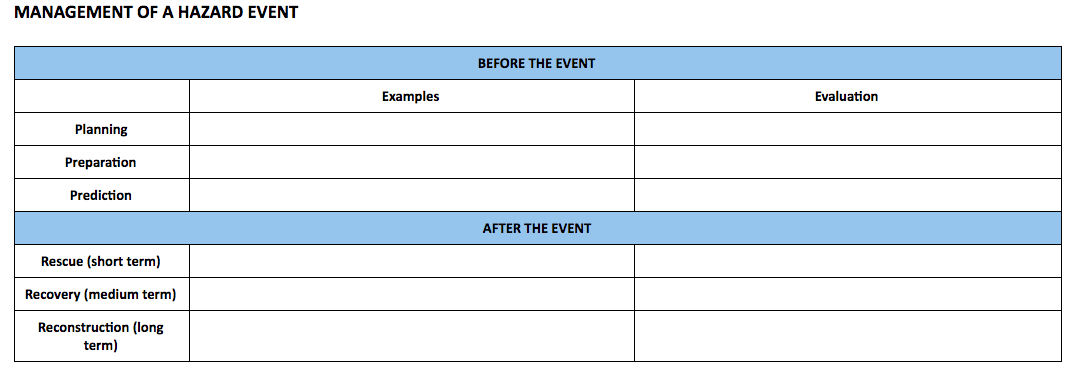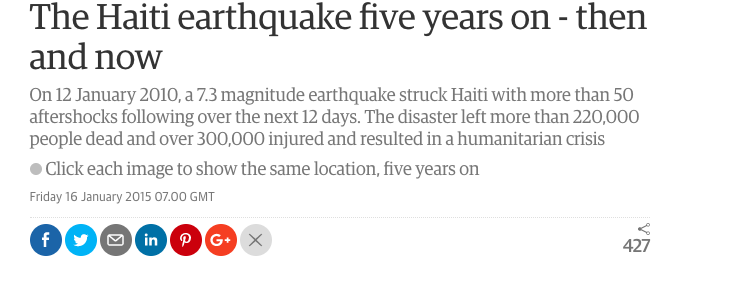Tectonic Hazards Case Study 1: Haiti, January 10, 2010
Specification:
Case study of the management of an earthquake in a developing country
A. Where did the earthquake happen and why?
Use your copy of the map below to add the following labels:
- Caribbean Sea
- Mexico
- Haiti
- Dominican Republic
- Florida
- Jamaica
- Cuba
- Puerto Rico
1. Watch the video and study the pate boundaries map below carefully. Use it to add the following to your base map:
- Caribbean Plate
- North American Plate
- Destructive boundaries (subduction zone)
- Conservative boundaries (strike-slip fault)
B. Why was Haiti vulnerable?
Use the CIA world factbook (link below) to produce a factfile on development in Haiti. You should compare Haiti to at least three other countries including USA, Sweden, Indonesia. Your factfile should include all of the following:
- GDP per capita
- Literacy rate
- Hospital bed density (explain what this means)
- Adult literacy rate
- Unemployment rate
- % of population with access to the internet
C. Effects of the Earthquake
Use your own copy of the table below to compile a detailed and clearly structured account of the impacts of the earthquake.
Fast facts
News footage
Photos of the damage
D. How was the earthquake managed?
Use the resources below to list and evaluate the ways in which the earthquake in Haiti was managed. Use your own copy of the table below.
We can divide the stages of earthquake management into the 3 Ps for before an event and the 3 Rs after it.
Before:
Planning - government and NGOs ensuring that detailed plans are in place in the event of a natural disaster. this might include evacuation plans, action plans for emergency services, stores of shelters, food, clean water.
Preparation - this is about readiness. It might include education of the people who live in an area including the use of the media, poster campaigns, school programmes, emergency drills. It might also include land use zoning to avoid building on unstable ground, building regulations to ensure that homes and public buildings can withstand a hazard event.
Prediction - this is about giving warning of an event. Although we cannot predict the exact time and location of an earthquake we can study patterns of where they have occurred.
After:
Rescue (short term) - this is about acting immediately after the earthquake to ensure that survivors have medical care, food, shelter. It includes search and rescue, emergency services and organisations providing food, water and shelter immediately after the event.
Rehabilitation (Medium term) - this includes supporting people in ensuring that in the weeks/months after an event that they have shelter, food, water, sanitation, access to health care. It will also include the cleanup and repairs of damaged buildings, rubble, material left by landslides. It is about supporting people to recover and get on with their lives where possible. It might also include emotional support.
Reconstruction (Long term) - this is about rebuilding of homes, roads, water supply, sanitation and other infrastructure.
We can divide the stages of earthquake management into the 3 Ps for before an event and the 3 Rs after it.
Before:
Planning - government and NGOs ensuring that detailed plans are in place in the event of a natural disaster. this might include evacuation plans, action plans for emergency services, stores of shelters, food, clean water.
Preparation - this is about readiness. It might include education of the people who live in an area including the use of the media, poster campaigns, school programmes, emergency drills. It might also include land use zoning to avoid building on unstable ground, building regulations to ensure that homes and public buildings can withstand a hazard event.
Prediction - this is about giving warning of an event. Although we cannot predict the exact time and location of an earthquake we can study patterns of where they have occurred.
After:
Rescue (short term) - this is about acting immediately after the earthquake to ensure that survivors have medical care, food, shelter. It includes search and rescue, emergency services and organisations providing food, water and shelter immediately after the event.
Rehabilitation (Medium term) - this includes supporting people in ensuring that in the weeks/months after an event that they have shelter, food, water, sanitation, access to health care. It will also include the cleanup and repairs of damaged buildings, rubble, material left by landslides. It is about supporting people to recover and get on with their lives where possible. It might also include emotional support.
Reconstruction (Long term) - this is about rebuilding of homes, roads, water supply, sanitation and other infrastructure.
E. Why was the Haiti earthquake so damaging?
Use the resources below to investigate why this earthquake, a 7.0 on the MMS did so much damage. Start by referring back to your factfile from Part B. You should create an infographic to explain the reasons that this earthquake was so destructive - the structure in the slide share below might be useful.
Additional material
This video from the Al Jazeera correspondent contains some disturbing footage but raises valid questions on how the quake was managed.
